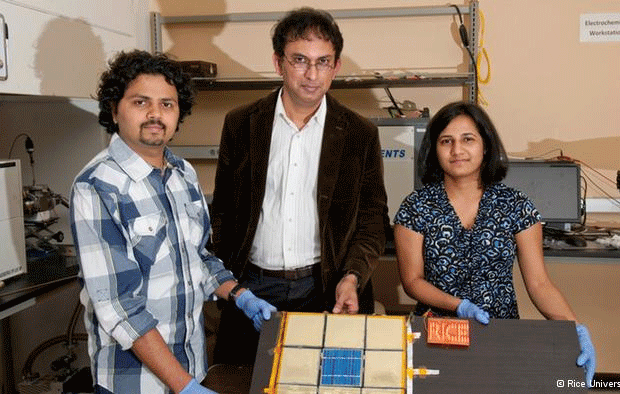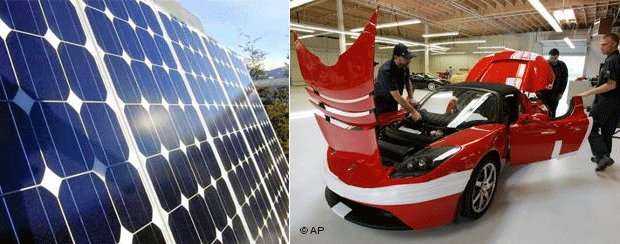|
When this correspondent told a coworker that
researchers at Rice University had developed a paintable battery, his
response was to sharpie an Eveready AA and hand it back. Perhaps a
better description is (odd as it sounds) battery-able paint. As in, a
paint that can be sprayed onto almost any surface, that holds and
discharges energy.
With the technology, "we can convert almost any object to a battery,"
said Neelam Singh, a researcher in the project to InnovationNewsDaily.
"Spray painting is already an industrial process, so it would be very
easy to incorporate this into industry."
|
|
 |
|
A more detailed breakdown of the technology, published in Scientific
Reports, reveals the same essential elements of a battery are present in
both the conventional and spray-on versions. A standard battery, built
of bulkier components, maximizes volume to surface area ratios by
rolling all the components into a tube; by contrast, the spray-on
battery lays down those same elements in a series of thinly layered
paints.
The resulting lithium-ion battery, reports CNET, barely loses capacity
after 60 full charge/discharge cycles. A set of nine fully charged
battery-painted bathroom tiles, hooked into an LED set that read "Rice"
remained lit for 6 hours on a steady 2.4-volt diet.
|
|

|
|
Sing told the Associated Press that, for the time being, some of the
materials involved are too toxic for outdoor use, but with a little
tinkering environmentally-friendly alternatives will be found. When that
happens, the batteries could be prime for solar energy development.
|
|
|